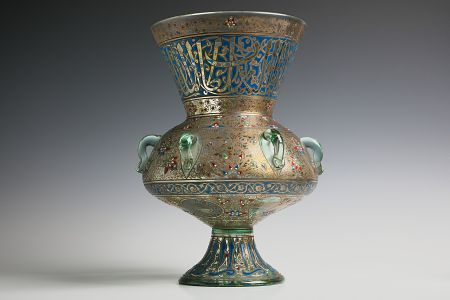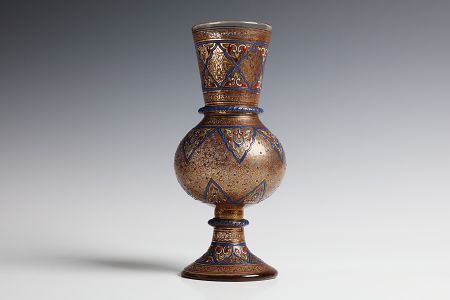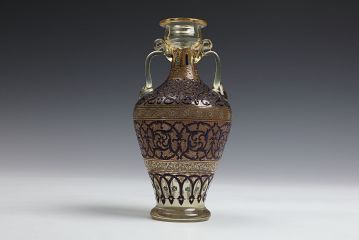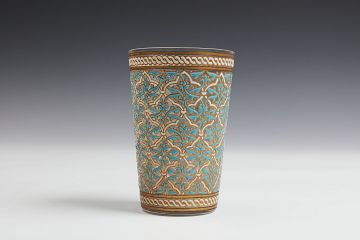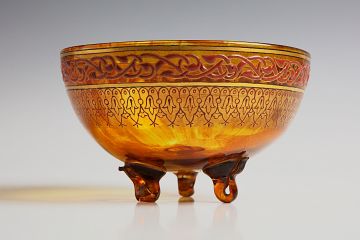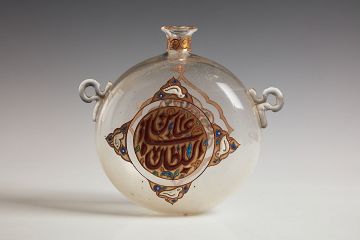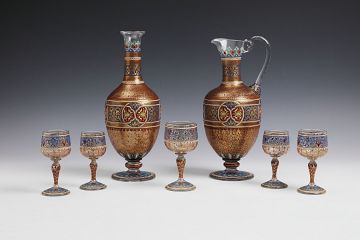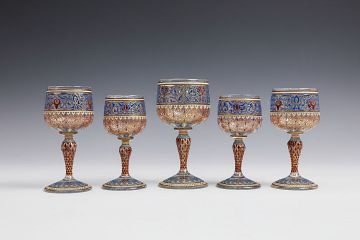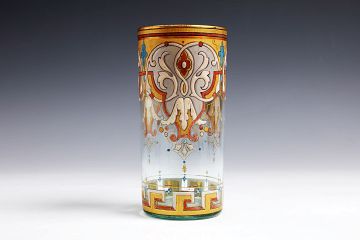Philippe-Joseph Brocard
Lens-Saint-Servais (Belgium), June 21, 1831 - Meudon, March 29, 1896.
Philippe-Joseph Brocard was born to a French family in Belgium. He specialized as antiquities restorer and soon became interested in Islamic glassware from Mamluk Egypt and Syria.
Brocard's creative work with glass began in the 1860s, when European culture continued to be dominated by Historicism, a fascination that dated back to the first decades of the 19th century. The stylistic landscape of the time seemed very confusing, as various motifs existed and interacted simultaneously: antique, rocaille, baroque, gothic and oriental preferences. Brocard was interested in the latter, in which he turned out to be a typical representative of his time, developing artistic ideas of glass design inherent in Historicism.
He learnt the enameling technique, its compositions and methods of application on glass. Based on Syrian examples of the 13th and 14th centuries, Brocard revived medieval glass painting technology and mastered it to such an extent that the products he created were difficult to distinguish from the originals. The painting was done in thick opaque or translucent polychrome enamel in the form of arabesques and Kufic inscriptions, finished in gold. In 1867, at the World Exposition in Paris, Brocard presented his work to the international audience for the first time and was recognized for the literal "imitations" of antique models.
Then he turned to painting transparent glass in the "Persian" style, which reproduced harmonious oriental ornament comprised of geometry and stylized flowers. In 1873 he took part in the World Exhibition in Vienna, where his works were recognized for their neatness, careful and accurate reproduction of ornamentation, and for a quality superior to other Oriental-inspired designs. Throughout his career, Brocard regularly exhibited at industrial fairs, which helped him gain considerable influence both nationally and internationally.
In the closing years, Brocard expanded his sphere of interest and created glass in the manner of ceramic vases, medieval phials and Renaissance bowls. Simpler forms of items also appeared, and the paintings’ pattern also had changed: foliage ornamental compositions with large stylized flowers on tall stems. This was dictated by the new style aesthetics, which was dominated by fascination with Chinese and Japanese art, as well as fondness for the natural world and floral ornamentation.
Beginning from the 1870s, Brocard's son Emile-Joseph became an employee of the firm, so the company changed its name to “Brocard et fils”. After the death of Philippe-Joseph, the firm was called "Brocard Glass" ("Verrerie Brocard") and was managed by the artisan’s son. Very likely that it was closed after 1900.
Philippe-Joseph Brocard was the first to originate the studio movement in the sphere of art glass, which developed at the end of the 19th century and continued in various forms throughout the 20th century, both in Europe and abroad. The revival of enameling techniques in Europe influenced Emile Galle and made Brocard a forerunner of the School of Nancy and, more broadly, of Art Nouveau.
